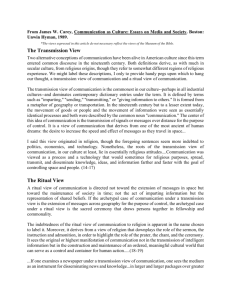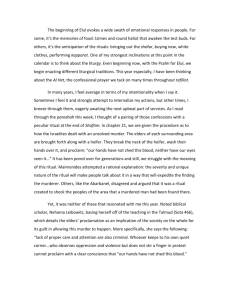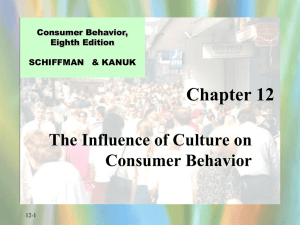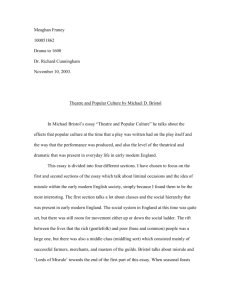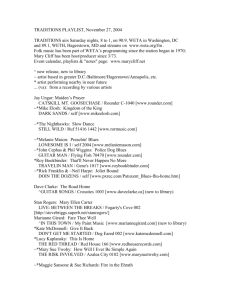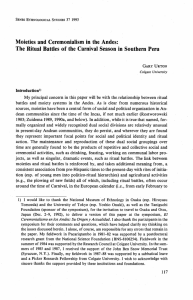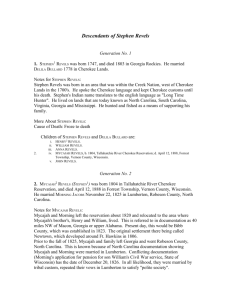Carnival and Shakespeare
advertisement
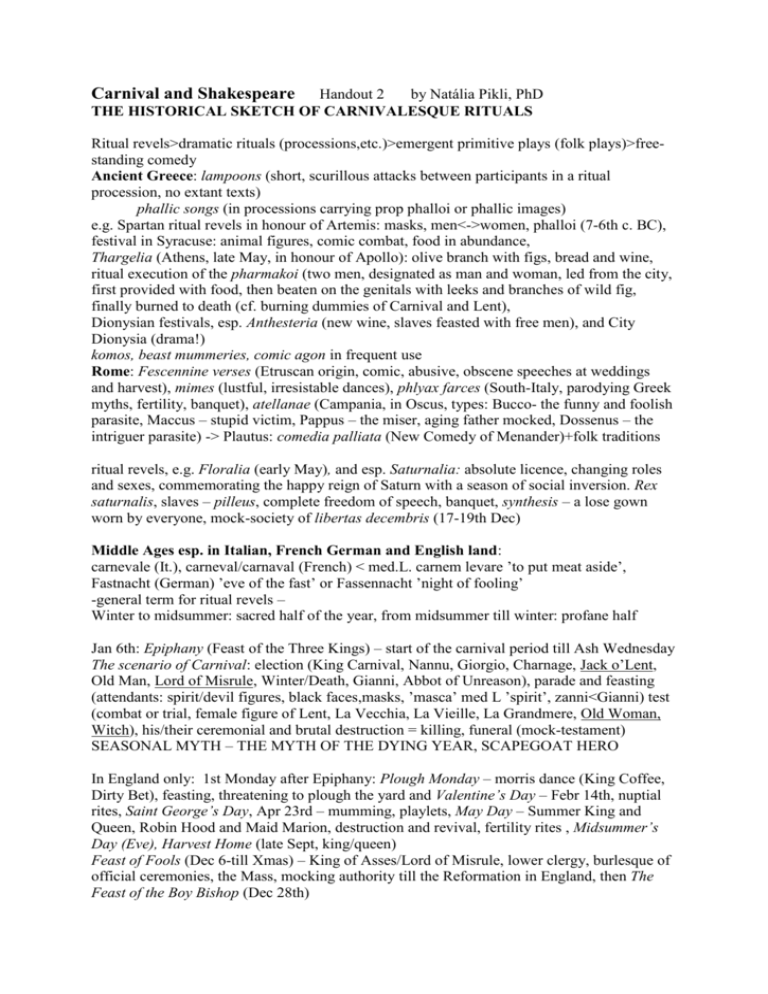
Carnival and Shakespeare Handout 2 by Natália Pikli, PhD THE HISTORICAL SKETCH OF CARNIVALESQUE RITUALS Ritual revels>dramatic rituals (processions,etc.)>emergent primitive plays (folk plays)>freestanding comedy Ancient Greece: lampoons (short, scurillous attacks between participants in a ritual procession, no extant texts) phallic songs (in processions carrying prop phalloi or phallic images) e.g. Spartan ritual revels in honour of Artemis: masks, men<->women, phalloi (7-6th c. BC), festival in Syracuse: animal figures, comic combat, food in abundance, Thargelia (Athens, late May, in honour of Apollo): olive branch with figs, bread and wine, ritual execution of the pharmakoi (two men, designated as man and woman, led from the city, first provided with food, then beaten on the genitals with leeks and branches of wild fig, finally burned to death (cf. burning dummies of Carnival and Lent), Dionysian festivals, esp. Anthesteria (new wine, slaves feasted with free men), and City Dionysia (drama!) komos, beast mummeries, comic agon in frequent use Rome: Fescennine verses (Etruscan origin, comic, abusive, obscene speeches at weddings and harvest), mimes (lustful, irresistable dances), phlyax farces (South-Italy, parodying Greek myths, fertility, banquet), atellanae (Campania, in Oscus, types: Bucco- the funny and foolish parasite, Maccus – stupid victim, Pappus – the miser, aging father mocked, Dossenus – the intriguer parasite) -> Plautus: comedia palliata (New Comedy of Menander)+folk traditions ritual revels, e.g. Floralia (early May), and esp. Saturnalia: absolute licence, changing roles and sexes, commemorating the happy reign of Saturn with a season of social inversion. Rex saturnalis, slaves – pilleus, complete freedom of speech, banquet, synthesis – a lose gown worn by everyone, mock-society of libertas decembris (17-19th Dec) Middle Ages esp. in Italian, French German and English land: carnevale (It.), carneval/carnaval (French) < med.L. carnem levare ’to put meat aside’, Fastnacht (German) ’eve of the fast’ or Fassennacht ’night of fooling’ -general term for ritual revels – Winter to midsummer: sacred half of the year, from midsummer till winter: profane half Jan 6th: Epiphany (Feast of the Three Kings) – start of the carnival period till Ash Wednesday The scenario of Carnival: election (King Carnival, Nannu, Giorgio, Charnage, Jack o’Lent, Old Man, Lord of Misrule, Winter/Death, Gianni, Abbot of Unreason), parade and feasting (attendants: spirit/devil figures, black faces,masks, ’masca’ med L ’spirit’, zanni<Gianni) test (combat or trial, female figure of Lent, La Vecchia, La Vieille, La Grandmere, Old Woman, Witch), his/their ceremonial and brutal destruction = killing, funeral (mock-testament) SEASONAL MYTH – THE MYTH OF THE DYING YEAR, SCAPEGOAT HERO In England only: 1st Monday after Epiphany: Plough Monday – morris dance (King Coffee, Dirty Bet), feasting, threatening to plough the yard and Valentine’s Day – Febr 14th, nuptial rites, Saint George’s Day, Apr 23rd – mumming, playlets, May Day – Summer King and Queen, Robin Hood and Maid Marion, destruction and revival, fertility rites , Midsummer’s Day (Eve), Harvest Home (late Sept, king/queen) Feast of Fools (Dec 6-till Xmas) – King of Asses/Lord of Misrule, lower clergy, burlesque of official ceremonies, the Mass, mocking authority till the Reformation in England, then The Feast of the Boy Bishop (Dec 28th)





